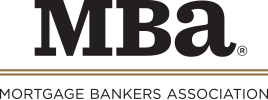
FHA Issues New Multifamily Handbook
The Federal Housing Administration yesterday published a new consolidated handbook to guide lenders on underwriting all FHA-insured multifamily housing construction and rehabilitation transactions.
The new Multiamily MAP Guide offers a new operating manual for multifamily underwriting through the Multifamily Accelerated Processing program. It can be accessed at http://portal.hud.gov/hudportal/HUD?src=/program_offices/administration/hudclips/guidebooks/hsg-GB4430.
The MAP Guide is designed to cut time required to approve loan applications and to assure consistent application of program requirements and credit standards across all HUD processing offices. While all provisions of this new MAP Guide will become effective for all applications for FHA multifamily mortgage insurance received after May 28, FHA has the authority to approve transactions that incorporate the new policies immediately for projects with Firm Commitments issued or reissued after date of publication.
“This new guide is the product of a substantial feedback we’ve received from those who will actually be using our programs to finance the production and preservation of FHA-insured multifamily housing,” said Ed Golding, Jr., HUD Principal Deputy Assistant Secretary in its Office of Housing.
HUD estimates 90 MAP lenders originating FHA-insured multifamily housing developments. Updating and clarifying the MAP guide supports an estimated $11 billion of FHA insured lending each year. In addition, Golding said the updated MAP Guide reflects “significant progress over the past five years” to improve processing times and to better align FHA multifamily transactions with industry standards and practices, especially those supported by the Low-Income Housing Tax Credit Program.
The MAP Guide is the result of a year-long process. In February 2015, FHA released a draft MAP guide and sought public feedback. Revisions incorporated in the new MAP Guide can be categorized into four main areas:
–Technical corrections and edits based on operational experience;
–Integration of previously published policy (e.g. Mortgagee Letters, Housing Notices, Memos, and less formal guidance) issued since 2011;
–Incorporation of the significant organizational and operational business model changes associated with the Multifamily for Tomorrow transformation initiative; and,
–Policy revisions.
FHA plans a series of conference calls and training with stakeholders to highlight changes from current practice, and answer questions.
